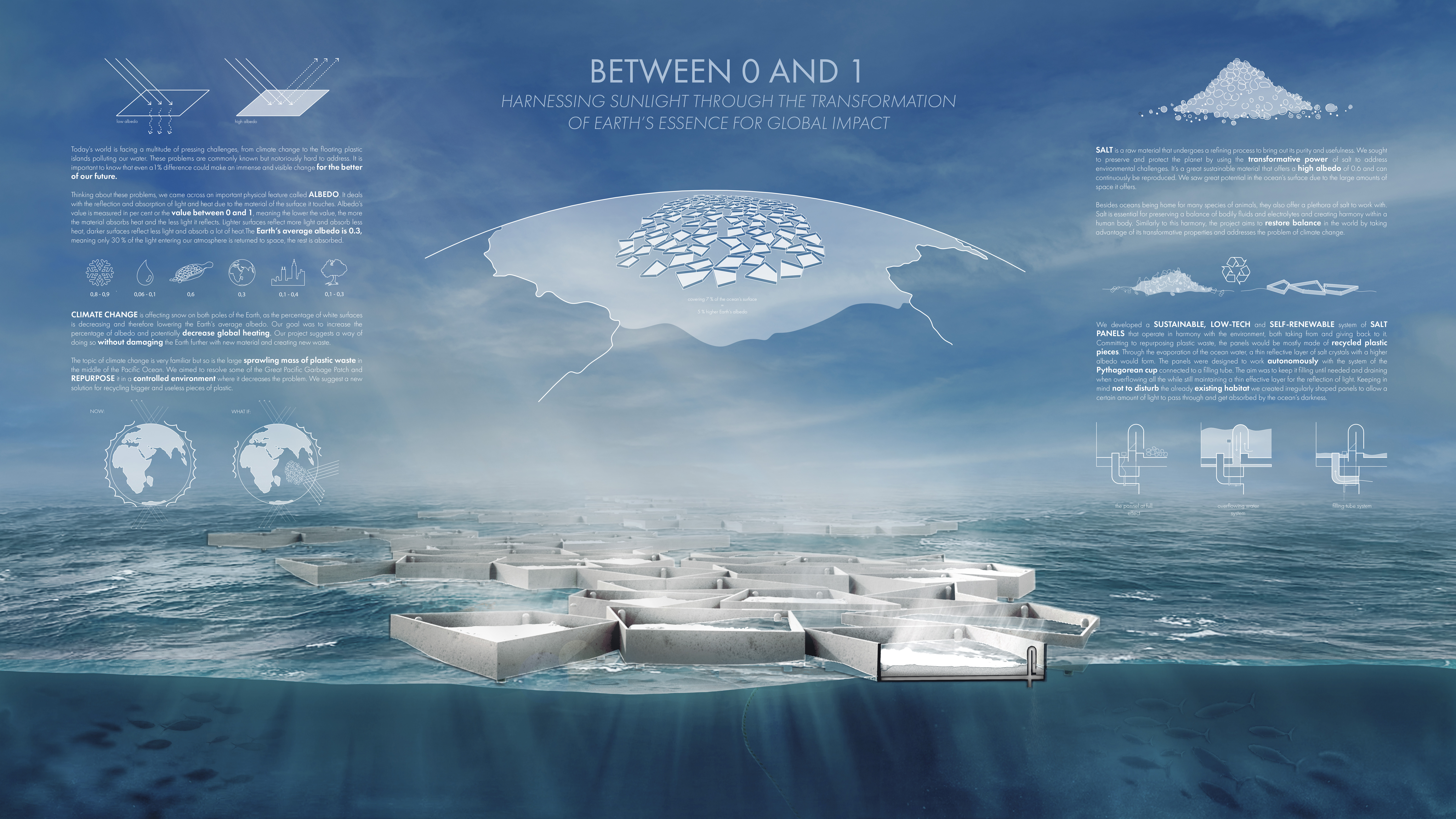2024 - BETWEEN 0 AND 1

Category
Daylight Investigations - Region 2: Eastern Europe and the Middle East
Students
Alja Bedenik, Gaja Bergant, Val Brudar & David Dobovšek
Teacher
Tomaž Novljan
School
University of Ljubljana
Country
Slovenia
Download
Download project board
Today’s world is facing a multitude of pressing challenges, from climate change to the floating plastic islands polluting our water. These problems are commonly known but notoriously hard to address. It is important to know that even a 1% difference could make an immense and visible change for the better of our future.
Thinking about these problems, we came across an important physical feature called ALBEDO. It deals with the reflection and absorption of light and heat due to the material of the surface it touches. Albedo’s value is measured in percent or the value between 0 and 1, meaning the lower the value, the more the material absorbs heat and the less light it reflects. Lighter surfaces reflect more light and absorb less heat, darker surfaces reflect less light and absorb a lot of heat. The Earth’s average albedo is 0.3, meaning only 30% of the light entering our atmosphere is returned to space, the rest is absorbed.
CLIMATE CHANGE is affecting snow on both poles of the Earth, as the percentage of white surfaces is decreasing and therefore lowering the Earth’s average albedo. Our goal was to increase the percentage of albedo and potentially decrease global heating. Our project suggests a way of doing so without damaging the Earth further with new material and creating new waste.
The topic of climate change is very familiar but so is the large sprawling mass of plastic waste in the middle of the Pacific Ocean. We aimed to resolve some of the Great Pacific Garbage Patch and REPURPOSE it in a controlled environment where it decreases the problem. We suggest a new solution for recycling bigger and useless pieces of plastic.
SALT is a raw material that undergoes a refining process to bring out its purity and usefulness. We sought to preserve and protect the planet by using the transformative power of salt to address environmental challenges. It’s a great sustainable material that offers a high albedo of 0.6 and can continuously be reproduced. We saw great potential in the ocean’s surface due to the large amounts of space it offers.
Besides oceans being home for many species of animals, they also offer a plethora of salt to work with. Salt is essential for preserving a balance of bodily fluids and electrolytes and creating harmony within a human body. Similarly to this harmony, the project aims to restore balance in the world by taking advantage of its transformative properties and addresses the problem of climate change.
We developed a SUSTAINABLE, LOW-TECH and SELF-RENEWABLE system of SALT PANELS that operate in harmony with the environment, both taking from and giving back to it. Committing to repurposing plastic waste, the panels would be mostly made of recycled plastic pieces. Through the evaporation of the ocean water, a thin reflective layer of salt crystals with a higher albedo would form. The panels were designed to work autonomously with the system of the Pythagorean cup connected to a filling tube. The aim was to keep it filling until needed and draining when overflowing all the while still maintaining a thin effective layer for the reflection of light. Keeping in mind not to disturb the already existing habitat we created irregularly shaped panels to allow a certain amount of light to pass through and get absorbed by the ocean’s darkness.

























